Are you looking for the most accurate kids bike size chart available on the Internet (used by bike professionals around the world?)
Then look no further, because this is the ultimate guide for you that wants to buy a (perfect) bike for your kid. 🚲
As any mother or father can testify, children don’t stay the same size for long.
That’s why choosing the right size bike for your kid can seem quite confusing.
Should you buy a bike that is too large for them at the start so they can ‘grow into it’ and have it for longer? Should you use a Kids Bike Size Chart? How high should the seat be and how much space should there be between the handlebars and the seat? How much stretch should there be in the leg and what size should the wheels be?
These are all good questions. But there’s surprisingly little information out there on the internet that deals with the question in a simple and informative way, let alone tell you which kids bike size chart you should use.
But don’t worry because Icebike.org is here to help. We’ve waded through the swamp of information and scoured our extensive research to give you the answers you need.
If you are in a hurry, check out all the bestselling kids bikes divided into age-groups:
One way to help choose a bike for your kid is to use wheel size to determine the right size bike. It’s not as comprehensive as the kids bike size chart below, but it’s a handy reference to have in mind. (Disclaimer: As Amazon Associates, we earn from qualifying purchases.)
Kids Bike Sizes Chart and Table
There are several factors that need to be considered when selecting a bike for a younger person. The first thing you should do is use our very own Kids Bike Size Chart to get an idea of what size of bike and what stage of bike you should be considering.
| Wheel Size | Age | Height (inches) | Height (cm) | Bestseller Kids Bikes |
|---|---|---|---|---|
| 10″ | 2 | 2’09”-3’1″ | 85-95 cm | See bikes for 2-year-olds |
| 12″ | 3-4 | 3’1″-3’3″ | 90-100 cm | See bikes for 3-4-year-olds |
| 14″ | 4-5 | 3’3″-3’7″ | 100-110 cm | See bikes for 4-5-year-olds |
| 16″ | 5-6 | 3’7″-3’8″ | 110-115 cm | See bikes for 5-6-year-olds |
| 18″ | 6-8 | 3’7″-3’8″ | 115-120 cm | See bikes for 6-8-year-olds |
| 20″ | 9-11 | 4’0″-4’5″ | 120-135 cm | See bikes for 9-12-year-olds |
| 24″ | 11-14 | 4’5″-4’9″ | 135-145 cm | See bikes for 11-14-year-olds |
| 26″ | 15+ | 5″+ | 145+ cm | See bikes for 15-year-olds + |
The important things to ensure as well is that the child looks and (very importantly) feels comfortable on the bike. Secondly, it’s a good idea to make sure the kid thinks the bike is cool and that they really, really like it.
A more accurate kids bike size chart (using the inseam)
Another useful form of kids bike size chart for determining the right size of bike, and some might say more accurate, is the inside leg length (or inseam) approach.
Measure your kids inseam by following these 3 simple steps:
- Place your child with his back against the wall and spread their feet 3-4″ apart.
- Place a book between his legs – spine up. Raise it until snug against his crotch (this mimics your bike seat).
- Now measure from the top of the book (spine) down to the floor.
| Wheel Size | Age | Inseam (inches) | Inseam (cm) | Bestseller Kids Bikes |
|---|---|---|---|---|
| 10″ | 2 | 12″-14″ | 30-35 cm | See bikes for 2-year-olds |
| 12″ | 3-4 | 14″-17″ | 35-42 cm | See bikes for 3-4-year-olds |
| 14″ | 4-5 | 16″-20″ | 40-50 cm | See bikes for 4-5-year-olds |
| 16″ | 5-6 | 18″-22″ | 45-55 cm | See bikes for 5-6-year-olds |
| 18″ | 6-8 | 20″-24″ | 50-60 cm | See bikes for 6-8-year-olds |
| 20″ | 9-11 | 22″-25″ | 55-62 cm | See bikes for 9-12-year-olds |
| 24″ | 11-14 | 24″-28″ | 60-72 cm | See bikes for 11-14-year-olds |
| 26″ | 15+ | 28″+ | 72+ cm | See bikes for 15-year-olds + |
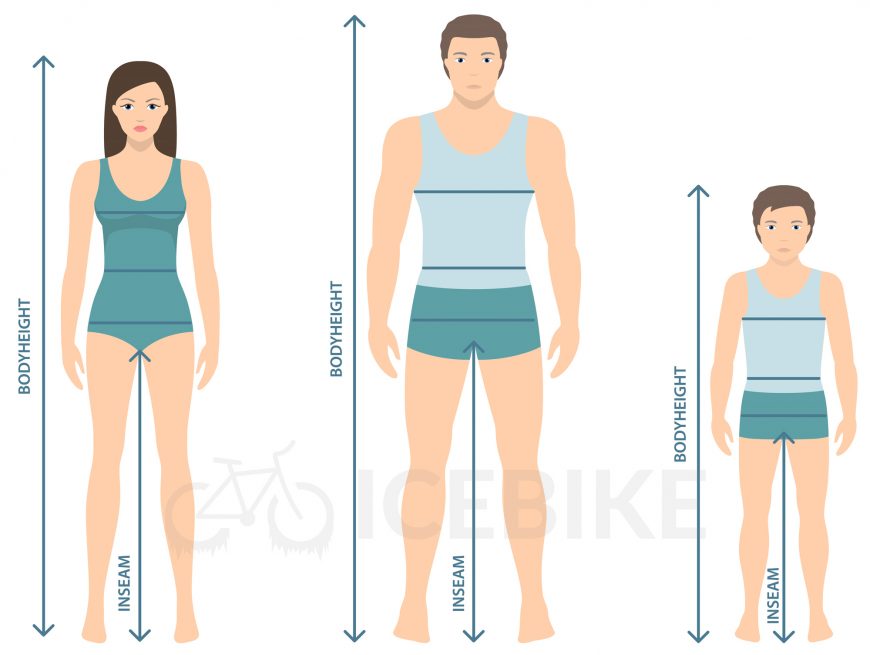
Buying your boy or girl a bike isn’t as simple as it was in the old days
At least not as simple as it was for me. When it came to my parents choosing the perfect bike for me it came down to which one of my brothers’ old bikes I wanted out of the garage. Having chosen, my father would lift the bike down off the peg, made sure it wouldn’t fall apart, and then said I had to be home before dark.
It’s different for kids these days
As grownups the ‘proper’ way to choose a bike is by primarily referencing ourselves to the frame size of the bike we intend to choose. In the most basic of terms, if we can stand over the bike with our feet planted on either side of the upper tube, then we can say with some certainty the bike fits. This is not how you choose the right size bike for your boy or girl. Ideally you should use a kids bike size chart to make sure you are making the most informed choice possible.
Fortunately, there are guides and guidelines for helping you choose a bike that is perfect for your child’s age and size. Take a look at the infographic below.
Infographic: Everything you need to know about kids bike sizing
The general rule of thumb is to use a bike size chart for kids. Sizing charts are available from all good bike websites and stores. There are slight variations in some of them, especially when moving to bike sizing chart for adults, but for children, they do remain consistent.
Below is our very own IceBike.org bike size chart for kids that puts all the latest thinking, science and experience to make it easier for you to pick the perfect size bike for your kid. The information within the guide contains the same information that bike mechanics and professionals use around the world to size bikes for kids and can be used as a really good guide for the rest of us.
As the kid’s bike size chart above clearly shows, when it comes to kids bikes, there are 4 main things to focus on.
They are:
- Child’s age
- Height
- Inseam
- Wheel Diameter
The child’s age determines a lot. If we take a minute to look at our snazzy infographic above, then we see that for beginners and younger kids between 2-4 years, a balance or toddler bike is a good starting point. Balance bikes are a great way to introduce children to the concept of cycling without the need for complicated pedals or a fully developed sense of balance. Normally children ride them with their feet on the ground and develop to do daring small glides.
Not everyone has the advantage of having a balance bike as an infant though, and it’s still totally acceptable to only start learning to ride between 4 and 6 years of age. One can learn how to ride a bike at any age. But between 4 – 6 years of age, almost all kids’ bikes will have pedals on them. A bike with training wheels or stabilizers (same thing) is a good choice of bike. Don’t limit your choice to just bikes with training wheels though, as training wheels can be bought separately and be installed or removed with ease.
Explore our guide on the best bikes for toddlers for top recommendations. Find the perfect bike and create unforgettable cycling moments for your toddler!
From 6 to 8 years of age and up, the other elements of bike sizing start to have more importance.
A Quick Note About Height
Kids heights should always be considered as they are a better indicator of a well fitted bike than age alone. For instance, not all 11-14-year olds are going to be between 115-120 cm tall. Some will be shorter, and some will be a lot taller. It makes sense then to use height as an important factor when buying a kid’s bike.
In the same way that height is a major determiner in choosing the right bike size for kids, the inseam of your child’s leg measurement is also another key factor. Just because your kid is 130 cm tall doesn’t mean that their inside leg measurements will correspond with a leg length of 50-60 cm. In this case, it’s best to physically determine which bike and what seat and handlebar adjustments/positions are most comfortable.
Wheel size determines the proportions for the rest of the bike when it comes to kids. As a baseline average, almost all kids wheel sizes are generally made with either 12, 16, 20 or 24 diameters. And just so you know, by the time you reach a 26-inch wheel you are crossing over into the standard sized adult bike wheel size. While these days most mountain bike wheels come in either 27.5- or 29-inches, for years a 26-inch wheel was the standard size. (Which is a throwback to the early years of mountain biking.)
As a rough approximation 10-12-inch wheels are designed for kids starting off biking and who on average are aged between 3-5 years. By the time your child is 14 years old, you will mostly be looking at 24-inch wheels.
What size bike at what age:
Use our handy kids bike size chart infographic guide to determine the right size bike for your kid’s height, leg measurement and appropriate wheel size, and you won’t go far wrong. If you want to know more though, read on:
2 – 4 Years
Smaller kids could face difficulty using a standard bike when taking up cycling for the first time, especially if there are gears, brakes and other adult style bells and whistles. So, as I said above, a balance or toddler bike is a good option when starting out, especially for riding around inside, under adult care and building confidence. Look for bikes with wheel diameters of approximately 10-12 inches.
Balance bikes are exactly what they say they are. They have no pedals and tend to only have a back brake if any at all. They are brilliant for letting your kid develop their sense of inertia, balance and learning how to steer. And as they have no means of propulsion other than how fast kids can push their feet off the ground, they are relatively safe to use indoors, and a generally safe way to learn overall.
Discover our guide on the best bikes for 4 years old. Find the ideal bike that blends safety and fun, ensuring delightful cycling experiences for your little one!
5-8 Years
As kids grow up and their confidence, skill, and sense of adventure grow, they can move to the larger 14 – 18-inch wheels. Kids bikes at this age start to feel and resemble grown up bikes. It’s also where the breadth of choice also really starts to increase, and it can start to feel somewhat overwhelming trying to choose the right bike for your kid. Don’t panic though, and keep the sizing chart in mind when selecting.
These are your classic first ‘proper’ bike models. Bikes in this range do come with simple gear sets and basic front fork suspension, but my advice to you is not to bother with either the gears or the suspension. They will most likely be cheaply made, not very good and add more weight than you child needs. That will also depend on how much you want to spend as well, of course.
The most important factor here is the fit, as discussed above. Make sure the kids’ feet can easily touch the ground and their hands can reach the brakes on the handlebars. This is where, in my experience, riders are born or broken. Unlike balance bikes, their feet will be on the pedals, not trailing along the ground for extra stability. They will also be going faster. What this means is they are now at a stage where they are more likely to have the occasional accident. Kids can deal with the occasional accident, but not if it becomes a familiar occurrence. So, make sure you buy the right size.
9 -15 Years and up
The older the kid, the bigger the wheel. Fortunately, wheel sizes on bikes for children don’t really get much bigger than 20-26 inches, and in the upper teen years kids also tend to stop growing.
Just because your kid is growing up the same rules still apply, however. For some kids especially the larger and taller ones, some adult bikes could seem like an attractive proposition, just be careful not to jump the shark too soon. All the above advice still stands. Make sure riding positions are comfortable and that you are not buying a bike with wheels that are too large.
No matter the age of the kid you are buying a bike for, make sure the bike fits the child and you are not trying to get the kid to fit the bike.
This is where most kids are likely to come face to face with proper set of gears and suspension. Geared versions of these bikes will come with between 5 and 10 gears, with hill climbing firmly in mind as opposed to speed. While not a necessity, it is handy for getting children used to how gears work. As a youngster, I rode BMXs up to the age of 16. However, a lot has changed since the early 21st Century. And while things were of course supremely better back in the day, the biking world has moved on.
It’s not uncommon now to find bikes in this age range 36 gears and triple chain sets. In my humble biased opinion, these additions just add extra weight, are more complicated and are not worth the extra money at this level. If you can, let your kid be a kid just that little bit longer. If they insist on gears, then try to limit them to single or low digit gearing.
Now yes, all that gearing, and suspension does look cool, especially if you’re a kid, but the chances are the forks will be cheap, heavy and not actually be effective. The truth is that fully rigid bikes at this level will not only be lighter, but also higher quality. If your kid is insisting on forks, then either buy the lightest frame possible, or upgrade to some 3rd party suspension forks. It will be money well spent.
Height charts: Not the Definitive Factor?
With all that said, height charts are not the single definitive factor when it comes to picking your kid’s bike. Instead, think of them as more of a starting point to help give you an idea of the size of bike you need and want for your child.
By far, the most important thing to do is get a test ride and observe how well your child is able to ride. It should be easy and in a controlled manner. You must consider the proportions of the child’s body and personal riding disposition.
Make Sure the Kid Likes the Bike
It’s probably not a good idea to spend money on a bike the young one clearly doesn’t like with the hope they’ll change their minds at some future date. They might change their mind, but then they might not, and Children’s bikes are not great for hanging or washing on. I’ve tried, it doesn’t work; not well anyway. There’s a chance the bike will end up unused and pristine under the stairs or gathering dust in the garage.
Don’t scar your child emotionally for life by buying them a Destructor 4000 Extreme when what they wanted was the Princess bike with a basket and sparkles. I’ve been there, done that and the results are not pretty.
And if you buy a bike that is too small your child, they may feel silly sitting on it, and even feel cramped. Conversely, buying a bike that is too large will be unwieldy, difficult to control, and undermine their fledgling confidence on the pedals.
Be under no illusion, the whole thing is a minefield, but a minefield you can cross.
The good news is that kids have so many choices when it comes to bikes. From teenagers to toddlers, there’s a bike for your child.
How To Choose Kid’s Bike Size When They Are Between Sizes?
You have finally found the perfect bike for your child and everything seems perfect but your kid seems to be between the sizes, what should you do now? This isn’t a really big problem, just make sure to go with how your kid feels about the bike.
There are two very important factors that you will need to consider to find the perfect size, those are the child’s inseam and the bike’s seat height. Apart from this, the wheel size and frame also work together to calculate the seat height of a bike.
As responsible parents, we can find the perfect bike for our child by determining the seat height, age, frame size, or bike wheel size. Even if your child didn’t even get to try the bike, it will be a perfect fit and they will surely love it! Here is how you can find the perfect bike for your child.
Take A Measurement of Your Child’s Inseam
Mostly, bike manufacturers base the sizing of their bikes on the height of children, although we recommend using the inseam. It is much more accurate than using the height of children, even if your child is between sizes, the inseam will always do the trick. We have already mentioned how to determine the child’s inseam above, have a look!
Narrow Down Different Wheel Sizes Based On Your Child’s Inseam
Now that you have determined your child’s inseam, choose two bike size categories. One will be higher and the other one will almost match the inseam. Considering that the inseam is accurate, always choose to go with the larger wheel size. You must be asking us why?!
A larger wheel size is more stable and also allows room for additional growth, exactly what a child needs.
Find The Perfect Seat Height (According To Your Child’s Riding Ability)
You won’t believe this at first but your child’s riding ability plays a very crucial part in finding the perfect seat height.
You should set the seat height of a bike depending on your child’s riding ability. (If they are using training wheels, beginner, or experienced).
For those asking what is a bike seat’s height: The distance from the ground to the top of the bike seat.
Beginner Bikes With Training Wheels Attached
Let’s talk about beginner bikes that are attached with training wheels. As the child doesn’t need to worry about balancing the bike or anything else, just make sure that the bike seat is set comfortably for them.
Setting the bike seat comfortably, now what does that mean? It means that the seat should be set 0-3 inches above the child’s inseam. In the case of timid kids, set the seat a bit lower. If your child is an aggressive rider then it would be wise to set the seat a bit higher as it will result in greater pedal efficiency.
Balance Bikes
Balance Bikes for kids are very simple, the seat height should be 0.5″ to 1.5″ below a child’s inseam. A child’s knees should be bent like in an athletic stance while seated on a balance bike. This stance allows them to ride the bike more effectively.
Beginner Riders
Now that your child has graduated from balance bikes, it is time for the real deal. Now, your kids should be able to sit properly on the bike with their feet flat on the ground. At this age, kids should also be able to stop the bike properly with the use of their feet.
The bike seat height should be according to the child’s inseam.
Experienced Riders
Experienced riders should now be able to use the bike properly. Getting on and off the bike comfortably, being able to use a hand brake or foot brake, all should come naturally to them. While seated on the bike, the kid’s toes should touch the ground.
The seat height can be set 2 – 4” above the inseam.
Buy According To Current Fit and Growth
Now that you know everything about the bike’s size and fighting, it is time to purchase the perfect bike for your child. You would have found the perfect seat height now (Thanks to step 3), it will be equal to or a bit lower than the height that you have discovered.
The bike that you will choose according to this method will fit perfectly for your child while also allowing room for growth. You won’t have to look for another bike anytime soon, don’t worry!
The bike should fit the child, not the other way around.
Safety is also a paramount concern and you should make sure to consider the following things when buying a bike:
- Never buy a bike that is too large for your child in the hope that ‘they will grow into it.’ Follow the guidelines in our kids bike size chart.
- Your child should be able to straddle the middle of the bike with their feet flat on the ground on either side of the bike with a good inch or two of clearance. They should not have to lean the bike one way or the other to get a foot flat down on the ground.
- You must consider what happens if they suddenly need to hop off the bike quickly. This is especially true if your kid is a boy and you think you might like grandchildren one day. The bike should only have a slight lean when your kid puts their bottom onto the seat, puts one foot on the pedal, and then scoots away.
- Your child, or the child you are buying the bike for, should be seated in a mostly upright position, and their knees and legs should not be bouncing of the handlebars. On the other hand, their legs also should not be completely stretched out at the lowest vertical position of the pedals either. There should always be a slight bend in the leg.
- Children should also be able to turn the handlebars in a sweeping motion to their full extent without being overstretched. Younger children tend to use the turning arc of the handlebars to steer more than older children and adults, who will also use balance to negotiate turns and corners.
- Ensure the brakes work.
- Make sure the kid knows how to work the brakes.
- Ensure the kid know the difference between the front brake and the back brake. Pulling on a front brake hard at a high speed can cause a child to be launched like a rocket over the handlebars, so
- Wear a helmet.
Expert Advice Is Invaluable
Never ever underestimate the power of good advice given by an expert. 5 minutes with an experienced and reputable bike expert can save you hours spent scouting the internet for the answer.
Why do some kids’ bikes seem to weigh as much as my own adult bike?
That’s a good question.
It used to be that kids’ bikes would be the only thing a Twister in Missouri would leave behind. The cheap ones still are and that’s because they tend to be made from steel rather than aluminum. There are advantages of heavier steel bikes in that they are rather indestructible, but they can also take a real effort for kids to ride, especially up hill.
More commonly these days, most quality bike manufacturers offer decent value lightweight bikes for the younger rider. This is an important fact to be aware of as proportionally speaking, kids’ bikes are harder to pedal than adult bikes anyway due to the smaller wheelbase. So, if you can, do try to buy light as you can.
You should also be aware that most kid’s bikes are designed to withstand a certain amount of abuse and rough play but that doesn’t mean they don’t need some looking after every once in a while.
Is there a difference between bikes for girls or boys?
No.
Or at least there shouldn’t be, especially for the younger rider.
Admittedly as kids get older, certain anatomical differences will start to assert themselves but even then, that’s not something that needs to concern any parent until their kids reach their late teens.
That said, people still market bikes that are specifically for either girls or boys. Most notably, the difference between these girls’ and boys’ bikes tends to be the ‘lower’ stand over -Murder She Wrote/Miss Marple- style bikes made for girls.
(For some reason, they also tend to have baskets. I say, ‘for some reason,’ but I have just been informed by my oldest daughter (9) that the basket is very useful for transporting Barbies and snacks. I tried telling her this is why we have panniers and backpacks, but she just won’t listen to reason. I’m still convinced that the reason she picked the pink beach-cruiser style ‘thing’ she rides everywhere was because it was the only bike in the shop that had streamers stuck onto the handlebars. Go figure.)
But yes, specific girls’ bike also tend to be brightly colored with classic feminine pink and white etc. Conversely, specific boys’ bikes will classically cliche darker blues and bright reds.
What’s singularly important to note at this point however is that there is no physical need whatsoever for the lower tube for girls and higher tube for boys’ difference.
The original idea behind the lower top tube bike designed for girls and ladies is something of a throwback to the 1800s origin of the modern bicycle itself, and a time when the female of the species was considered to be a ‘fragile’ ‘delicate’ damsel of a thing compared to the far ‘superior’ ‘bigger brained’ male. Females also had to consider their modesty when cycling, and the idea that they would have to ‘mount’ a bicycle by raising their legs over a high physical upper bar was tantamount to a scandal and may cause episodes of fainting. Women also tended to wear big dresses and long skirts back then as well and this meant having a high-top tube was somewhat impractical.
Mountain bike or Road bike for the older kid? Does it matter?
I think to be fair, there’s not really much of a style choice in the younger cyclists’ arena. A large swathe of kids bikes right up to the 24-inch wheel sizes, almost uniformly resemble the mountain bike or regular style with the wide, grippy tires and horizontal handlebars.
The first real differentiation between bike styles starts to creep in at 24-inch wheelbase level. This is where you will start to see the option to buy slick tired bikes with the racing bike drop handlebars. But as always, really, it all comes down to what your kid wants to ride.
I don’t think I can give a lot of advice on this particular aspect of riding as it’s really a personal choice. I would stick with the mountain bike style though if the kid you are buying for doesn’t express a strong opinion. It’s still possible at this stage of the game to own a fully functional kids’ bike that will do the job.
That said, if all they do is ride on roads, and never go off road, then perhaps a road bike is the way forward. Whatever you do, make sure they try them out first.
What about a BMX?
BMX style bikes have an awful lot going for them. They are tough, single geared, extremely durable, and their resale value is quite high.
The best thing about BMX style bikes though is their inherent ability to go anywhere and deal with any biking situation life can throw at them. By their nature, they are small wheeled bikes, which means, as I’ve already stated, kids can start using them at a very young age, and many kids’ versions will come with a 12-inch wheel.
Even when moving to a fully sized 20-inch wheel BMX base, the bike is the same shape, just slightly bigger. One of the big pluses of a BMX is that for the same money as a kids’ mountain bike, you’ll probably end up with a lighter and better bike overall.
Explore our guide on the best BMX brands for top recommendations. Find the perfect BMX bike and unleash your skills with the most reputable brands in the industry!
Helmets and Children: A Word to The Wise!
It is essential that whenever a kid is riding a bike they wear a properly fitted helmet that is the right size and weight for their head. Children’s heads tend to be marginally larger in terms of proportion to the rest of their bodies. Do not underestimate the health and safety benefits of wearing a bike helmet. Do not overlook the importance of your kid’s brain. It is a sad truism that a lot of time is spent picking the perfect bike while the purchase of a helmet is an afterthought or is bought based on the style or color of the helmet. Do not let this be you.
Ensure the safety of your little riders with our comprehensive guide on vital aspects to consider when choosing toddler and youth bike helmets.
It might also be a worthwhile investment to buy some elbow and knee pads, especially when they’re just learning.
Final thoughts on Kids Bike Sizes
- Get the right size at the right time.
- Make sure the bike fits.
- Use our kids bike size chart, but remember they are only guidelines.
- Make sure they look comfortable on the bike.
- Ensure the kid wants the bike you’re buying.
- Buy the best you can afford, but be cautious with your cash- stay on budget.
- Don’t bother with all the bells, whistles and heavy fancy gadgets bolted on to appeal to easily influenced minds.
- Do get expert advice.
- Do some research first so you can at least understand what the expert is talking about.
Really final thoughts
Be responsible and teach your kid how to be safe when they ride, wherever they ride.
AND MAKE SURE THEY ALWAYS WEAR A HELMET!!!!!!!
Recommended:
Explore our revealing guide on the shocking reasons why walmart bikes are only for kids.
Explore our guide on road bikes vs. mountain bikes for insightful comparisons. Make an informed decision and choose the perfect bike for your preferred riding style and terrain!
Should you have any questions or require further clarification on the topic, please feel free to connect with our expert author Euan Viveash by leaving a comment below. We value your engagement and are here to assist you.

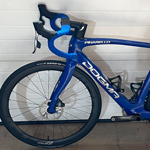
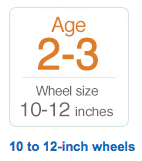
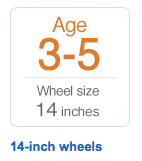
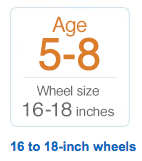
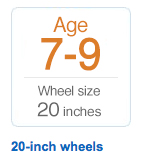
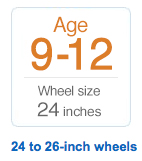
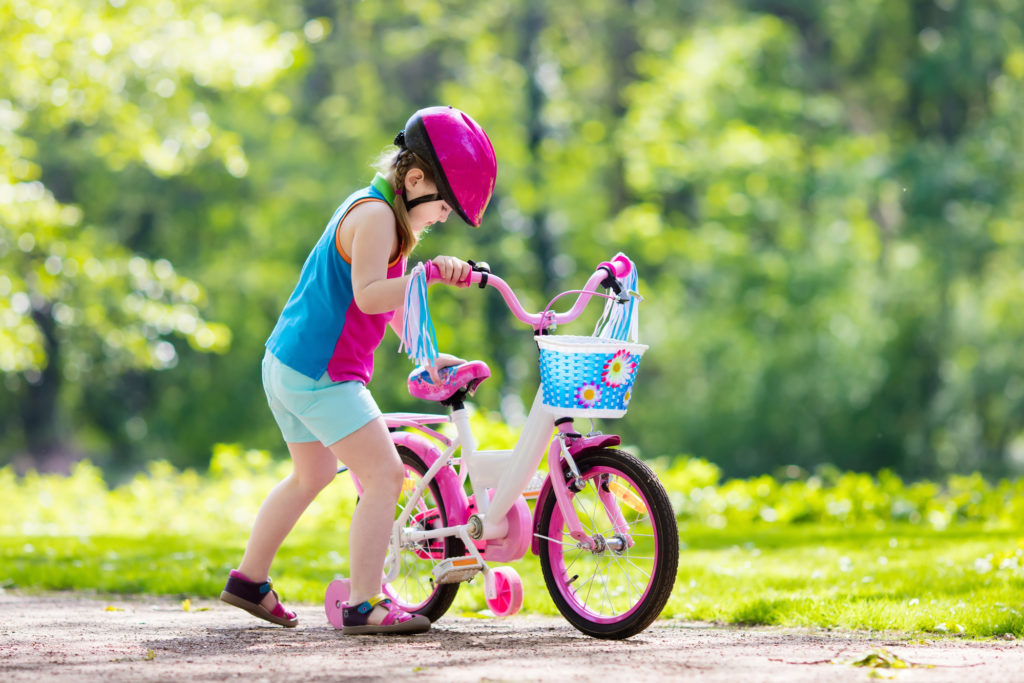
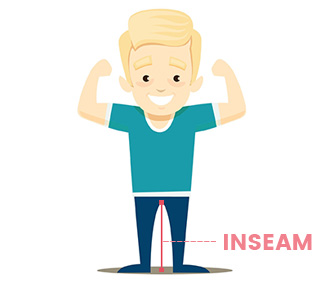



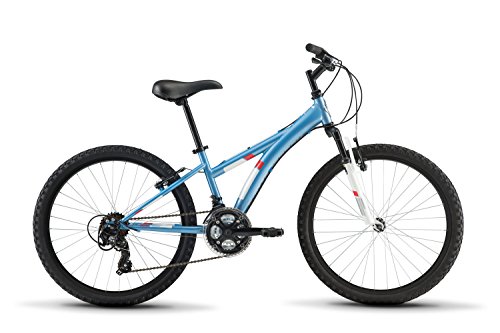
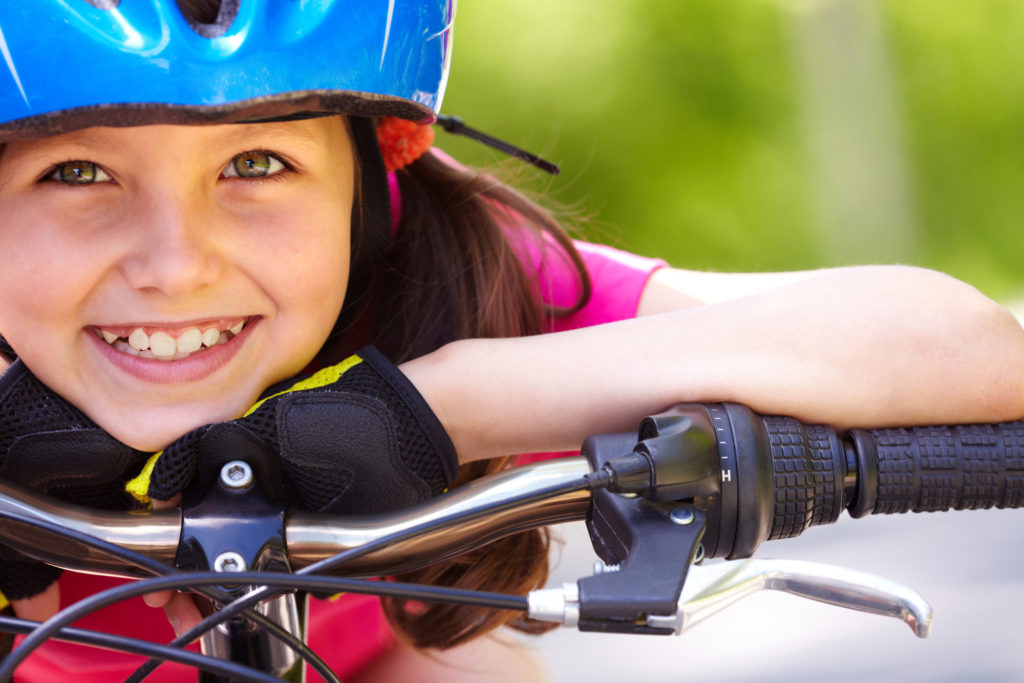
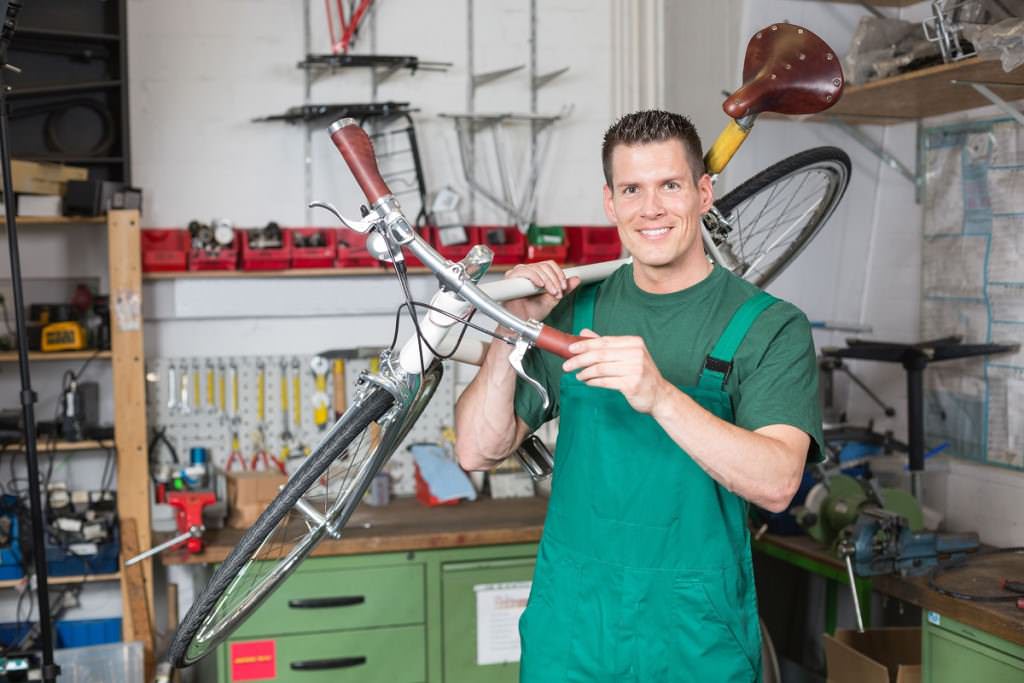
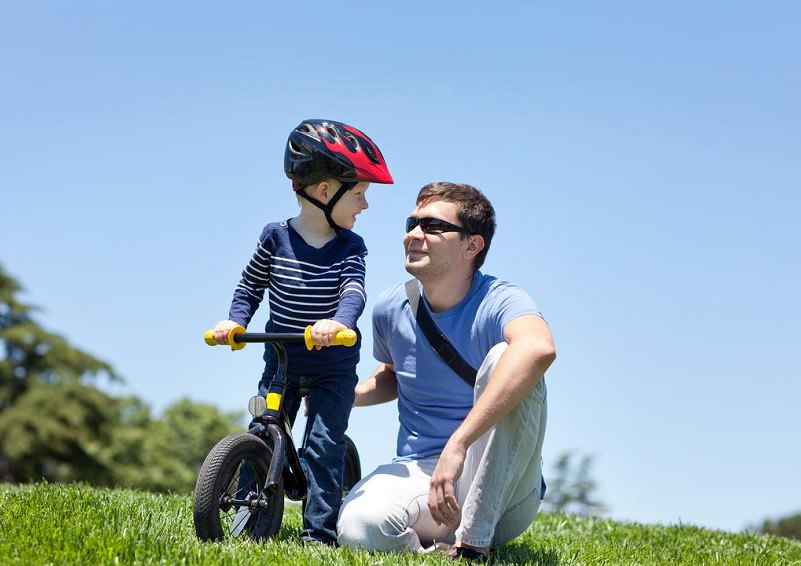
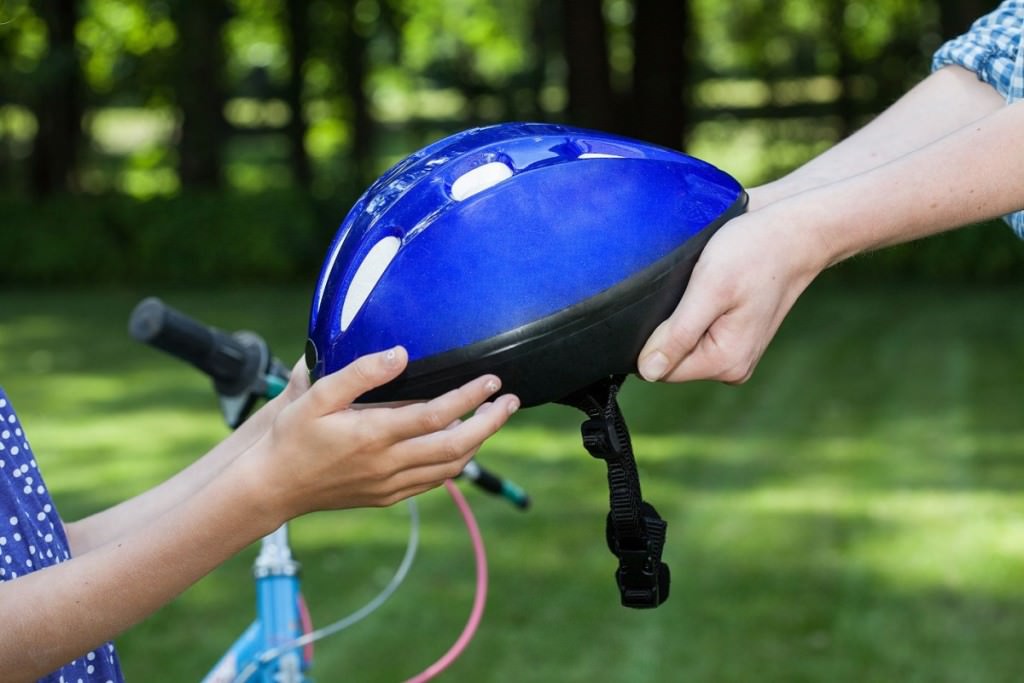
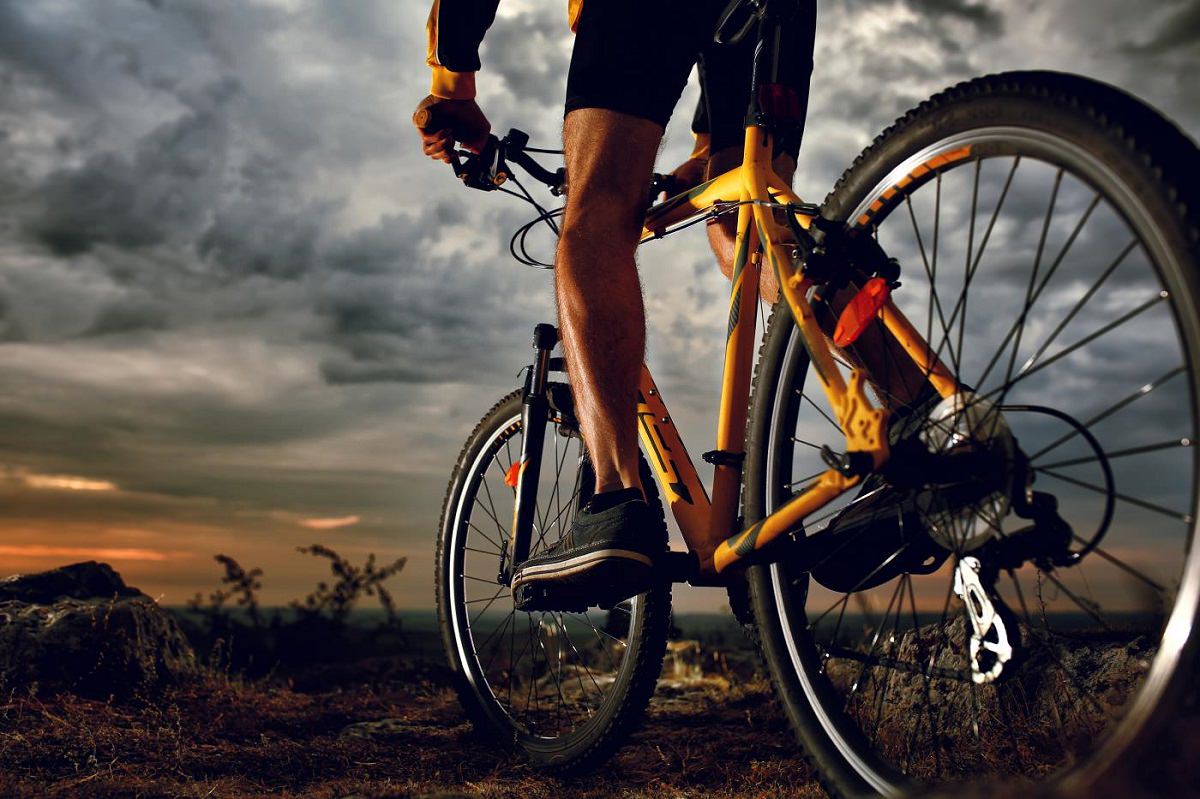
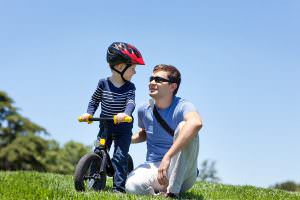
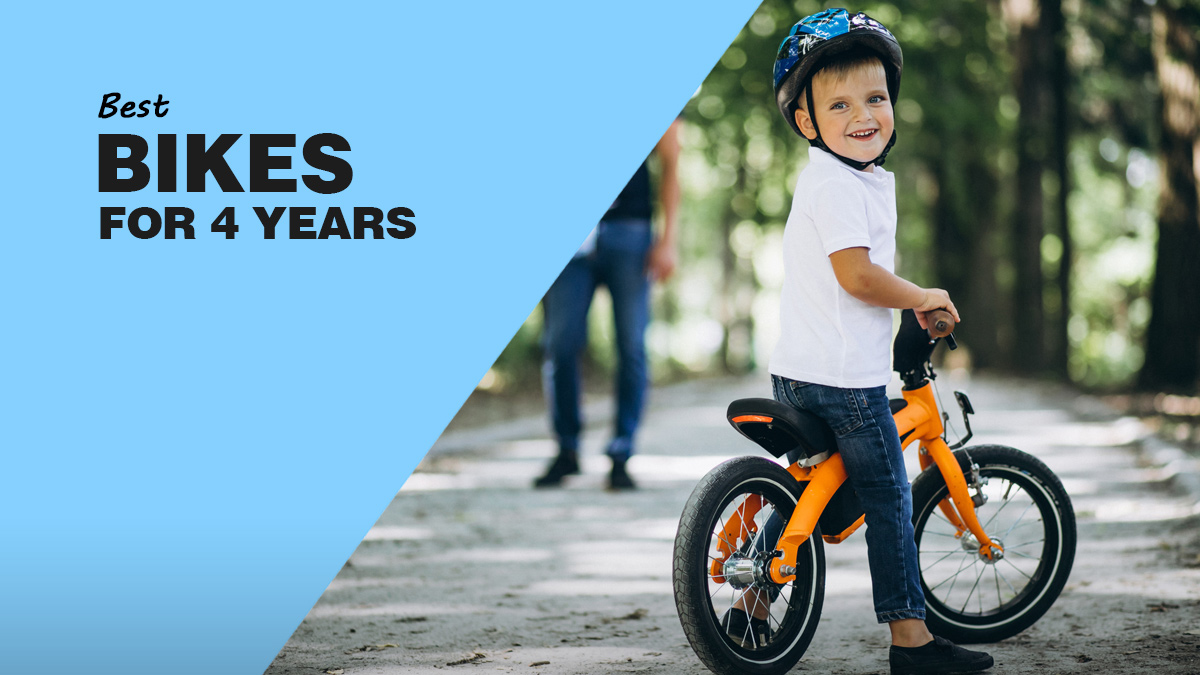
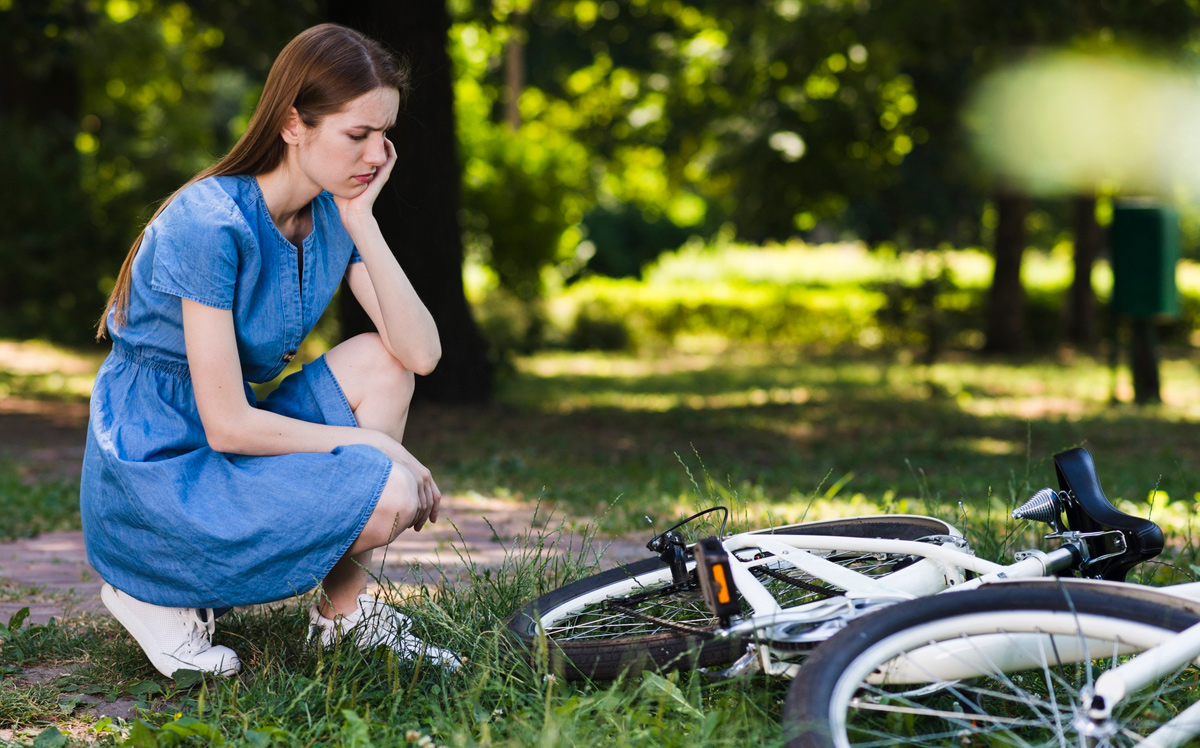
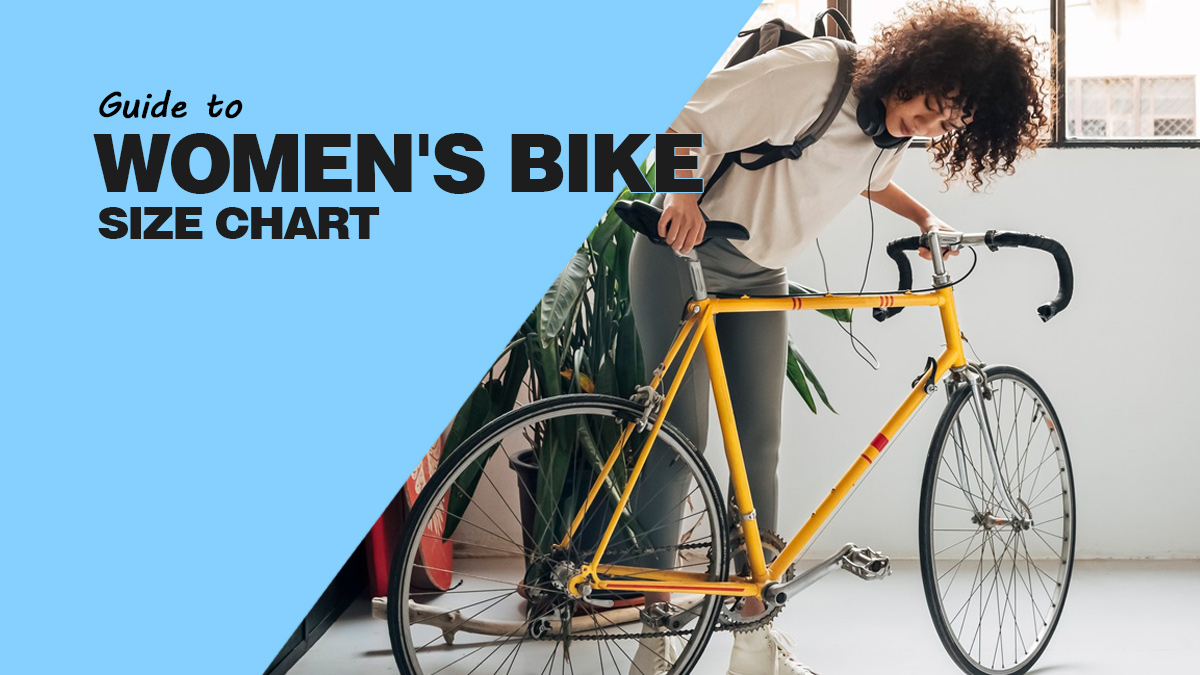
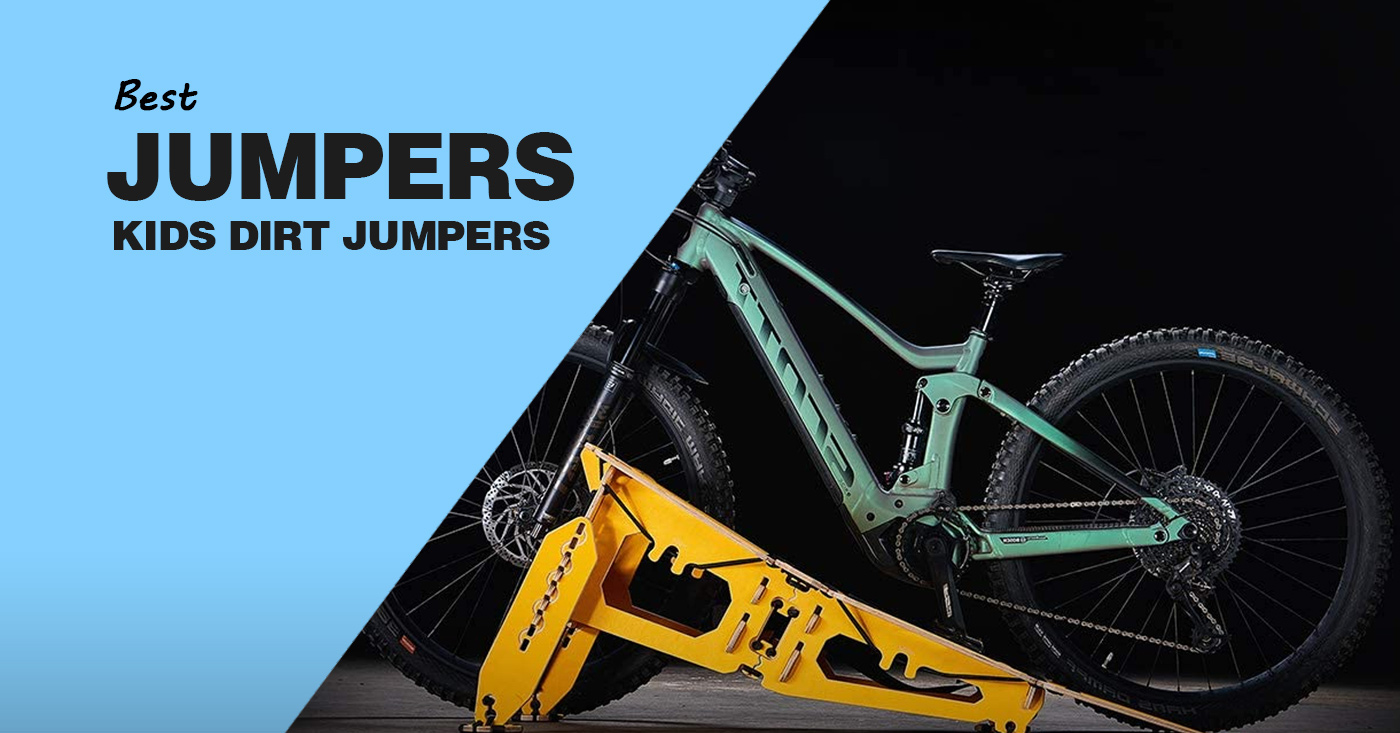
104 thoughts on “Kids Bike Size Chart: The Definitive Guide to Kids Bike Sizing + Infographic”
This was SUCH a helpful article. After read your article, I can get the right size for my 3 year old little boy. But I think if your child is less than 5, wearing the helmet will affect their head, I mean is cervical spine so be careful. Thanks so much for this article.
How do you think wearing a helmet will affect their head?
If you think the helmet can reshape his head, what do you the concrete will do? Everyone, of every age, should wear a helmet when bicycling. Saved my neighbor’s life.
Helmets are interfering with their vestibular development. I trained my boy like I was trained, like my father was trained; like his father before him and his father before him; like, in fact, every human since the invention of bikes, when it wasn’t considered a life-threatening, permanent-brain-damage-imminent-defcon-1-lethal activity. Once he was fluent in riding the bike (a few days), and if we’re in sight of cops or finger-wagging busybodies (we live in Southern California so this is basically everybody), and because it’s the law (naturally), we don the least offensive helmet we could find. Yes, helmets give bikers a false sense of safety, and make drivers less cautious around them, but a stupid, reactionary, illogical law-which-wasn’t-invoked-due-to-any-particular-uptick-in-brain-injuries is still the law. Considering that brain injuries just from falling down while walking, and from driving, are vastly more common than from falling off a bike, I’m surprised we’re not all forced to wear helmets while walking around and driving. Wait, nevermind. Forget I mentioned it. P.S. My kid has, miraculously, managed to cheat death despite sometimes riding without a helmet. We’re reckless devil-may-care types that way. We’ve preemptively made funeral arrangements and his headstone will read “THEY TOLD US SO.” So, relax.
A really helpful, well written article. Loved James’ response to Paul Nelson’s- hilarious. I sincerely doubt that Mr Nelson’s concern that wearing a bike helmet is going to affect the shape of his kid’s head is warranted – unless children’s helmets are made of cast iron in the US? In the UK we just shove any old flimsy polystyrene lid on and hope for the best..
You’re an idiot, sorry to say. Yea, we all did all of the devilish stunts when we were kids BEFORE people knew better. Same as why we were not vaccinated back then either. Now science, and more common sense has caught on. If you have ever seen a TBI child (traumatic brain injury) you will invest in the safest helmet that you can find. Sure it’s easier to not have one on, but if they learn WITH a helmet and develop the mindset that this is just what you do when you ride a bike, it will be the same as when you ride in a car—when I was a child many cars did not even come with seat belts—that’s how uninformed we were. Now we wouldn’t think of placing a baby on the front seat of the car, or let a toddler hang his head out of the window–because we know better. Get with the times, and keep your children safe.
It hasn’t been suggested that bike helmets should be banned. Holland and Denmark are countries with unusually high levels of everyday cycling, winter and summer, and in both countries few adult cyclists wear a helmet ( or Lycra, for that matter ). Injuries,including head injuries, in Holland and Denmark are at a far lower rate than in those places where helmets are compulsory. This is almost certainly because there is more general acceptance of cycling among car drivers, most of whom will be regularly using a bike themselves. Children in these countries generally do use a helmet, because the chances of a child coming off are considerably greater than for an adult, and they have less road sense. But most adult riders do not, and they ride to work in ordinary clothes. Cycling is not seen primarily as a leisure activity, or a competitive sport, but as a convenient means of getting around the locality.
With regard to motorist behaviour, experiments carried out by British safety organisations have established that overtaking motorists in general give significantly greater clearance to a bike rider wearing a long haired wig than to one wearing a helmet, and that clearances are not affected by the rider wearing hi-vis clothing or otherwise.
By far the greatest cause of fatal injury to cyclists, by the way, is overtaking vehicles turning across their path, and a helmet doesn’t help much in such cases.
None of this says that you shouldn’t wear a helmet if you feel that it helps. It does protect your head in certain kinds of fall, the point being whether that kind of fall is significantly probable for adults riding sensibly. On the other hand it has been well established that those countries which make helmets mandatory experience a marked fall in overall cycling, which in turn leads to its own downsides, worse general health and increased burning of fossil fuels.
Questions for James: Did I read this right?? What F’n driver is going to be LESS concerned about a biker’s safety just because they’re wearing a helmet? What evidence do you have to support this ridiculous assertion? While I might agree with the spirit of your reply that we’re all a little too damn over-sensitive these days, why would you care enough about bike helmets to diatribe about it here, especially if it makes one kid even A LITTLE safer??
If you’re that passionate about it, contact your local representative and help draw up a bill outlawing bike helmets and maybe YOU can be grandfathered out since you come from such a long line of bad-asses. I’m a kid of the 70’s and guarantee I did all of the reckless, devil-may-care, stupid ish you sarcastically reference here. Admittedly, I’d piss myself if my kids did half of the the stuff I and my brother did. But while my brother only had scratches and bruises that have long since healed, I’m left with the reminder of my daredevil days EVERY DAY of my adult life. To this day I have no memory of what happened but I was told that I got tangled with another kid and flipped over my handle bars and landed directly on my dome. I do remember slowly waking up on my back on the asphalt and seeing my brother’s face as the fog cleared. This is some 35 yrs ago and for my efforts I got a concussion, a night in the hospital and a quarter size plug in my head where hair has REFUSED to grow ever since. Maybe not a big deal to someone as hardcore as you…just battle scars, right, tough guy? Point is that it doesn’t always have to be a traumatic brain injury. The law of averages says your kid will fall off a bike at some point in their riding career…and you’re a fool to think falling off a moving bike can be compared to falling while walking (smh). That comparison is just dumb. I don’t care who says what or how it may interfere with their vestibular development, and I hope it never happens to you or yours, but mine will have helmets on at all times for that one time where someone else makes a mistake that may cause my kid to wreck. But hey, If you’re that badd-ass, be a rebel and simply refuse to make your kids wear a helmet. Just save the diatribe on the final line of a post that’s about sizing the right bike for your kid. I don’t think anyone here is interested.
James,
Thanks for your opinion about not wearing a helmet. You sound like a guy that hit his head one too many times on the pavement.
Hugs and Kisses xoxo
Good article on the bikes but for all the parents who read this and are unsure about the risks of their kid wearing a helmet or not, I thought I’d offer a few thoughts in a balanced argument. I grew up riding the bikes in the 70s and fell often. I was a daredevil. It’s almost impossible to tell how much my loss of neurons affected me. I started racing bikes in the 80s and wore helmets then, even when it wasn’t fashionable.
In my 40s, I loaned my bike helmet to my daughter who had grown out of her child-size and needed an adult sized helmet. The following week I went out on my bike, realised I hadn’t bought a new one, couldn’t be bothered to adjust the straps again, so took a chance. A huge tree had fallen down in the forest on a downhill section, round a bend. I saw it at the last moment. I don’t know how long I was knocked out for. Some guy found me there. I was off work with brain damage for a couple of weeks, could hardly stand, remember stuff, even speak fluently. The effects started to reduce after a month. I feel very lucky.
I now have a young daughter again. She has been riding on the back of my bike since about 13 months old. Before that, the spine and neck muscles are too soft. She always has a helmet on (Nutty Kids helmets are super cool). They only weigh 200g. She loves it. It’s comfortable – if it wasn’t, that would be a sign of risk for the vertebrae that supports it. I am more concerned if she falls asleep on the back seat as the neck can go at an angle. Now she’s nearly 2.5yrs, it’s less of an issue.
Don’t cheap out on helmets please parents. And spend some time adjusting the straps so that it fits properly. If the kid falls and the helmet pushes up or comes off, it was a false protection all along. Just chucking on any bit of foam in the expectation you are just fulfilling some compliance obligation (even if it is peer pressure) is negligent behaviour. Kids and adult brains are the same: they are gelatinous organs which are highly vulnerable to the effects of sudden deceleration. All other risks balanced out, a helmet is your best mitigation for brain damage or death.
In addition to being entertaining and well written, JAMES IS RIGHT! His position is NOT simply “I didn’t wear a helmet as a kid, therefore kids don’t need them now.” Children getting head injuries from riding bikes has always been, and still is, almost nonexistent. Personally, from my limited experience riding BMX bikes in the 70s n 80s, I took some bad spills as did everyone, but not once did I or anyone I knew get any type of serious head injury.
James’ point about helmets giving a false sense of security is completely reasonable; there are many other safety deices/features for which there is ample evidence where “safety features” result in less safety. Crosswalks are a perfect example – google it if you don’t believe me – its well known among traffic engineers. There are LOTS of studies that indicate that crosswalks at many types of intersections often INCREASE the likelihood of pedestrians being hit crossing the road. Why? False sense of security, as James said.
This false sense of security effect turns out to be a factor precisely where there is LESS risk. For example, crosswalks at busy intersections do generally reduce accidents. Whereas crosswalks at less busy intersections generally increase accidents. Without getting too much into the weeds here, it has to do with the psychology of having safety devices that fit the risk of the activity. Its entirely unconscious, but people are slightly less careful when they walk in a crosswalk, vs. no crosswalk. Or when they wear a helmet, vs. not wearing a helmet. Its human nature.
I haven’t seen any good data out there, and I doubt there is any, since people at not inclined to challenge a well-intentioned public safety policy… but I suspect helmet requirements for kids riding in parks and neighborhoods has not decreased head injuries, and its entirely possible its increased these injuries.
Not surprisingly, the more that cyclists are exposed to traffic, the more the benefits of helmets will outweigh the negative implications of helmets. I have no doubt that helmets do improve safety for those cyclists who ride regularly on streets at relatively high speeds in and out of traffic. Same thing with mountain biking on steep rough terrain, or high speed motorized bikes – helmets make sense. But an 8 year old riding his bike in his couldesac? Take the helmet off – he/she is as safe or safer, and they’ll probably have a better experience.
Wow. That’s a lot of spew, based on no knowledge whatsoever. Helmets are the single most effective means of avoiding serious head injury when riding any kind of wheeled transport – whether your family has ever benefitted from them, or not.
James. I respect the fact that generations of your family, have been instructed in Bike riding, by the very best. It seems, to me, that the reason so many believe/insist on, Helmets, is because there are so many other people that have not had such exposure to Life’s Instructions. It’s from them that my child’s helmet is meant to protect.
“bicycle‐related head injury is a significant contributor to hospitalisations and death worldwide.” (Ivers, Systematic reviews of bicycle helmet research, 2007) This review included five well conducted case‐control studies and found that helmets provide a 63–88% reduction in the risk of head, brain and severe brain injury for all ages of bicyclists. Helmets were found to provide equal levels of protection for crashes involving motor vehicles (69%) and crashes from all other causes (68%). Furthermore, injuries to the upper and mid facial areas were found to be reduced by 65%, although helmets did not prevent lower facial injuries. The review authors concluded that bicycle helmets are an effective means of preventing head injury.
But you’d know better. So, fuck science.
Seriously?? If your kid is only going to be riding the bike for 1-2 hours at a time, that’s going to screw up their head?
I hope you really don’t believe what you said. If you feel that a helmet will compromise your child’s head, think of what the cement on the sidewalk will do—get with the times and keep your child safe.
Been a cyclist for 40 years(since 3) a helmet has saved my life many times, the helmets of 40 years ago were very different, heavy and some of them made of leather and rubber, I can only tell you if you love your kid, procure he or she wears a helmet when riding a bicycle, you will thank god or who you believe to when he only gets a head ache and bruces. I really hope you never regret not making your child wear a helmet.
I think they are too young to wear the helmet, because their bone still longer soft.
My child wore a Doc band helmet as an infant to fix her head shape, she had to wear it 23 hours a day. Wearing a bike helmet for riding is not going to reshape a 3 year olds head. They will not even fit a Doc band after 18 months.
Totally agree. If a helmet could reshape your head, I don’t want to imagine what sleeping on a hard mattress could do.
are you serious, or just kidding? If a helmet can change the shape of your child’s head, what do you think the asphalt on the street will do?
Wearing their helmet could be the difference between a fractured skull and headache if they fall off at full speed.
Totally agree!
totally agree—then you read that the child “survived” the accident, but don’t know that a lot of them no longer can function normally, sometimes a hard impact can cause them to go blind, or have enough of a brain injury so severe that the never walk, talk or do anything “normal” again. It’s such a sad sight to see a child who was injured in a small enough accident that should’ve just given them a heache end of in a nursing home for the rest of their lives.
Is your kid going to be wearing his helmet 24/7?
No.
Is he/she wearing a custom cranial helmet MEANT to re-shape the skull?
No.
So don’t worry about skull deformities.
Make your kids wear helmets. Teach them good habits when they are young.
… and their bone is very resilient. Having a helmet on their head for the short period of time is NOT going to reshape their head. I’d rather have my child be safe than pound their “soft bone” into the concrete and suffer a life changing event. Where is your thought process? Darn suspect I’d say.
Doctors do use helmets to help re-shape a child’s head when they have severe craniosynostosis which is when one or more of the seams (sutures) in a baby’s skull close before the baby’s brain has fully formed. The brain continues to grow but the child’s skull doesn’t where closed & the head becomes very abnormally shaped and interferes with brain development. Those children wear a helmet CONSTANTLY in order to re-shape the skull (like kids who wear braces to straighten/reshape their bite). Having said that, wearing a helmet for the short periods kids ride their bikes will NOT change the shape of their scull. So put a helmet on your child and quit worrying about that. What you should worry about is how not wearing a helmet puts them at risk for a concussion or a brain bleed or perhaps something far worse. I grew up in the days of no helmets, flew over the handle bars hitting my head, was unconscious and sustained a severe concussion. A traumatic brain injury (TBI) can have lastly consequences (learning disabilities or other medical issues). I was lucky that didn’t happen to me but it could have so it’s better to be safe by putting a helmet on your child than face the alternative and maybe end up saying, “I wish I had…”
If your kid’s helmet is so tight that it creates enough pressure on their head that you are afraid it will reshape it, then you bought them the wrong size helmet.
My son is almost 4 but very tall for his age. Buying his first bike for Christmas so I can’t exactly let him try them all out. On both the height and inseam, my son is on the lowest range number for the 16′. Just worried it will be too big. Any advice?
Really depends on whether he can reach the ground on a 16′ bike (so he can ride and stop safely). If he can do that, I don’t a 16′ bike would be a bad choice.
His height is 43 and his inseam is 18 if that helps.
Great information! Very helpful. I had to chuckle at the last section where in bold it reiterates that kid’s should ALWAYS wear helmets… yet one of the first pics of the family biking along a leaf covered trail- not one of them’s wearing a helmet.
Finger pointing aside, since those pics were clearly promotional, I’m so glad to have this info as our kids are also getting bikes for christmas and won’t be able to get on them until Christmas day.
Good point. Didn’t notice that before (the photos are stock photos).
Be careful when adding aftermarket suspension forks to a bike that didn’t come with them from the factory. Sometimes the head tube angle can become dangerously steep when the suspension is at full compression. This, in very extreme situations can cause a head tube to become compromised, leaving the rider in a bad spot!
Good point. Thanks.
Adding a suspension fork slackens the head tube angle, usually a lot on a bike not meant for a suspension fork (as the frame is built for a shorter fork). When the fork compresses, you will likely not even get back to stock geo. That said, I can’t imagine a situation where I would recommend adding suspension to a bike not designed for it, which rules out virtually all consumer level bikes (as opposed to more boutique/higher end Brand’s and bikes).
As a cycling advocate, and apparently a grammar nut, contact me if you’d like some help with some typos in here.
Thanks for a good article
Very clearly communicated article, thanks for taking the time. So it’s Christmas eve and I just finshed assembling my 8 yr old daughters first full size bike. Its a 20″ Mongoose Byte Girls’ Bike and with an inseam of 24″ im beginning to think maybe i needed to get a bigger bike?
My considerations though, are that:
1. She’s still not learned to actually ride a bike without training wheels, so getting her something she could control and felt comfortable riding was top priority.
2. Ideally i wanted to get a lightweight bike as she is pretty wiry (all legs), basically for the same reason as mentioned above. But my budget was really tight so here we are,
I guess what im asking most is, would it be better to just return this bike for a more appropriate size since every chart i’ve seen says she’s borderline too long for this one, or just stick with the smaller bike as it might appear less intimidating, lighter and easier to handle, or go ahead and get the 24″ inch since apparently it’s the most appropriate size for her going forward? I’m torn
Sounds like the 20″ might soon be too small for your daughter, so maybe it would be a good idea to exchange it for a 24″ so she can keep using the bike for as long as possible (as long as she can ride a 24″ safely, i.e. that a 24″ isn’t too big for her).
Hello I want to buy a bicycle for my sister. She’s 8 years old. I don’t know which bicycles that I should to buy for her. please recommend me to buy it thanks
Really depends on what she wants and what she is going to use it for?
How tall do you think is too tall for a 24″? I’m looking into bikes for my small 11 year old. He’s been riding a 20″ BMX (it’s a pretty long frame), but needs something different as we head into better weather. I’m just trying to figure out how long a 24″ might last him…
Hi, Please help!
My almost 5 years old son been avoiding riding bicycle until now, he have a new bike in the garage (been there over a year! unattached) now he have decided to have a go…
His 12″ bike seams to small and he really have a problem when pedalling. Due to salesman advice the bike is right size for him , he have a good balance skills but if I insist on getting another bike I should get 14″ one.
My question is is it necessary to go size by size on bikes or can we go straight to size 16″ BMX bike? My son is 109cm tall.
Thank you.
It’s not necessary to go size by size, but it’s super important that he can reach the ground properly on a 16′ bike (i.e. that the bike is safe for him to ride on).
Good article. I went and test fit my almost 9 year old on some mountain bikes over the weekend. He is just about 4’8″ with a 25″ inseam. He seemed to be about to outgrow a number of the 24″ bikes. I’m afraid he would outgrow the 24″ bike too soon for it to be worth the money for a decent bike. He tried a 24″ fatbike that fit him really well but with the fat tires it essentially had 26″ diameter wheels and a longer top tube than most 24″ bikes. Any thoughts? Thanks.
I wish there was more support for the 18 inch wheel size. Some manufacturers are really starting to support it. My 7 year old is too small for a 20 inch bike to be not scary for her but her 16 and larger extent her 12 are just too small.
I wish I could find her an inexpensive cruiser at 18 inch wheels
Hi. My husband weighs around 110kgs and was advised to ride a bike. What are the types of bikes which cater to that weight and also durability? Is BMX good for that too? It’s mainly on the road. Thank you.
My daughter just 2 years can I teach her to ride a bike? if can maybe I will chose one small bike for training her.
HI I AM A TWEEN AND I AM TALL 5 FEET 6 INCHES. WHAT BIKE SIZE DO I GET???????????
The worst way to size a child’s bike is by frame size since the frame size will vary from bike to bike meaning the stand over height and distance from saddle to pedal can vary even with bikes of the same wheel size. since i own and run a bike shop i may seem a bit biased but finding a reputable independent bike shop in your area to buy your child’s bike can yield excellent results . Most shops will offer a good choice of models and sizes of bikes that are professionally assembled to offer a safe and easy riding experience and let me tell you most bikes these days more than ever need a a pros touch . not to mention you can usually test drive the bikes outside as they were intended and have the bike setup to your child’s needs especially in regards to saddle height,handlebar reach and brake lever reach .
correction …i meant to say the worst way to buy a child’s bike is by wheel size alone
Thank you for the article. I’m purchasing a bicycle for my three-year old grandson and wanted to make sure I am getting the correct size. Is there any preference on helmets? Is a Target brand okay? What should I look for in a helmet?
Thanks.
I have a very tall 8yr old daughter who, almost overnight, started riding her way-too small bike like a champ. I’m weighing the pros and cons of a mtn bike vs BMX and what wheel size if I go mtn bike. Based on being very tall 8 yr old, I think 24 inch is best except she’s very new to riding.
I’m not considering her type of riding as a factor in which type of bike to get…..daddy has both a mtn bike and BMX-style bike (29’er) bike and I’m leaning toward a BMX for its simplicity, weight, lower stand over height and length of time she can ride it.
Now that I’ve given all the details to help with a recommendation, my question is
Mountain vs BMX and which wheel size for each bike.
Thanks in advance for any advise and RIDE ON!
The major question on 20 inches and up is WHERE your kid is going to (mostly) ride.
For us this has changed what is good general advice significantly.
Where I live the roads are simply too dangerous and the ones that aren’t don’t link up.
We have some cycle paths that suffer the same problems in linking up.
However we are blessed with a local “trail centre”. No cars and in theory no pedestrians either.
We really started when he was almost 6. (Before this his steel ‘bike like object’ was a hindrance to him enjoying whereas he was already doing tricks on a scooter) .. but one day (after seeing older kids at school he wanted a real bike.. so I cut the “ride without stabilisers deal”) – 2 minutes later my wallet felt the first pinch of many.
We got a 6 speed. He barely got on the 20 but it was just safe enough.
We started off on a 10 mile ride (on a flat canal towpath). He decided to cycle back so it became a 20 mile ride. (I’ll add he wasn’t particularly fit … he’s tall for his age)
We then quickly ran out of “safe” …. and started offroad.
For us our local conditions turns a lot on it’s head.
Gears are a must … as soon as possible. Whereas he could have done the towpath on a fixed speed he wouldn’t have averaged the 15 mph he did on his way back but more importantly once we moved offroad he wouldn’t be able to ride 3/4’s of the trails.
He was riding red confidently very quickly… but then suspension quickly became a game changer … as he rode more and more aggressively which drove the move over to a 24er
By this time he was 6 1/2 and 1m22 (4′ and change) but the hire guys at the trail centre let him try out a 24 incher. About 9 months after just getting on a 20 he just got on a 24.
As per the advice in the article…. we went for a bike with Air Forks. (As it happened I found a bike with a decent Frame and Air forks)
This came with cranks that were WAY too long (152mm) …. so initially we used the cranks from his 20 incher.
At this point my wallet started feeling the pinch.
I shortened a set of adult cranks to 140mm (with the right cranks it’s a lot easier than you’d think) and got rid of the front mech.
After this the bike transformed. Off came 3kg of heavy/weak components and due to me having spares forr my own bike and the magic of “used” on eBay and a bit of timing (people selling nearly new 10 speed because they are moving to 11 speed) on went 1kg of better quality components.
Again WHERE we ride had a huge influence.
The local trail centre is great but known for the mix of sticky mud and sand and has lots of roots and 1′ dropoffs… and this had proven a constant issue on his V-brakes.
Adjusting them for hand size leaves a tiny gap that quickly shows up any lack of true in the wheel. Combine that with sand in a sticky mud and it’s a horrible sound.
So not because of performance (the v brakes had all the stopping power needed) but because I was constantly re-truing his wheels to 1mm tolerance I switched to hydraulic disk brakes.
This is another geographical thing… I mention it as it means the wheels and frame need to be ready for disc brakes. An alternative is to add weight and use 36 hole/spoke+ wheels… and/or bigger tires but again down to what you want to use the bike for.
For those interested we ended up losing 2kg (4.4lbs) from the bike and a single 1×10 speed set-up. A 30T ring on the front and a 36/40 on the rear – the 40 being an expander that goes on for real mountains.
Another 1kg +of weight loss would possible for more money…and that would take it to sub 19lbs with a 7lb fork and his 20 incher is still in use as he only rides the 24er on trails.
But the main point here is look to where you expect to ride and the conditions.
If they can safely get on a bigger frame then it might be better for offroad.
For those who may follow on a similar path: For what it’s worth I’d start off with the frame/forks/wheels and upgrade everything in one go. Trail riding is hard on the cheaper components and in 9 months we got through 3 rear mechs and 2 shifters and it would have been cheaper to start off with the stronger (and lighter) components.
Hi Mads,
Firstly, this is probably the best article I have found in regards to bicycles for young children. Very clear and concise information, so thank you very much for taking the time to write it!
My 4 y.o. currently rides a 14″ wheel BMX. Based on his size and in-seam he could possibly ride a 16″ or 20″ bike (this one being slightly big). Three cycle shops I have been to have given three different opinions on the next step of his riding journey – one says get a 16″, another says get a 20″ and the last says if he still can ride his existing bike keep it as long as possible then get a 20″.
I am considering holding off on getting a new bike but want to know if there could be any potential issues if he rides a bike that is starting to get too small for him?
Thanks in advance for your advice.
Very informative article. Thank you!
Which brand is light weight for a 24 inch bike? Can you let me know how to make sure a helmet fits properly?
Hi, i have a concern around choosing the right bike… All articles talk about wheel size and very few on the frame sizes. U fortunately i have to buy a bike online (small city – no bike shops) and i don’t know if a Bmx bike pf 18.5 top tube lenght or 20 inches top tube lenght will be too big. Wheels on both are 20 inches. My son is 6 amd a half, 128 cm, and 56 cm inseam… As we’re buying online it’s difficult to know if it’ll be too big…. Help please ????
My Girl is 6 years old but they are very tall for their age and here are a couple of things which I am not sure so checking here:
1. She needs a bike with training wheels as she is going to ride the bike after almost 2-3 years
2. What size of bike that would suit her best, should I go to nearby store to find this or if you could help
Regards,
Kamy
hi
great article. my daughter is 3, just thinking of getting her a first bike, she looks too big on the radio flyer she has now.
when you say a child’s feet should should be able to straddle the middle of the bike, while feet are flat on the ground, do u mean with the child already on the seat, or off the seat in a stopped position?
thank you
This is so helpful!!! Could you give any recommendations for a decent bmx bike for an 8 year old boy around $250?
Thank you Mads Phikamphon for sharing this article.
My daughter won’t buy wrong bike anymore. Because I had followed your introduction 🙂
Hi, looking for sizing for a cruiser for my 16 year old daughter. She’s a bit tiny for her older sisters 26 inch Raleigh. She’s 4 ft 11 inches, 98 pounds with a 27 inch inseam. Wears only a size 3 shoe. Looks like they make the cruisers in a 20inch, 24 inch and the 26 inch. Which would be best for her? Her sisters Raleigh 26 inch has the large balloon tires so I’m not sure if that is making a difference in her being comfortable on it? Thanks for any help.
hi im 12 and i am a boy who is really into road racing i am about 5 feet tall and my mom and i need help finding a good bike for me to use please answer back
thank you very much in advance
Hi Mads, I would like to thank you for providing this article, it’s given me a great start on what I need to look at to find a bike for my son who loves to ride. Due to my budget, I usually shop for his bike’s at the local pawn shop, which is isn’t always the best fit, but the best I can do because he’s always in need of a new bike.
I’ve been considering a foldable bike for his next birthday, they’re lightweight which from what I’ve read and quite easily adjusted to suit the rider. I’m not certain which would fit him best, I’ve never seen one to know. I’m going with what I’ve been able to find online so far. My son is approx 5′ and continues to grow at a rate I can’t keep up with. He’s never quite managed to master the gears on any his mountain bike’s, which concerns me but he rides what is available and loves it. His safety is my number one priority, so I haven’t a clue where to begin… aside from wearing a helmet and ensuring he can touch the ground.
Yes I’m adamant that everyone wear helmets, especially after being the recipient of head injuries. I grew up hearing ” It’s like riding a bike…” It took me 7 year’s of getting back on, falling more times than I thought possible before I could stay upright for longer than than ten seconds. It’s still hard to balance, hard being an understatement. Riding a bike wasn’t the only thing affected, I’m sure you can tell I’m mentally disabled by what I’ve written here. Writing this has been time consuming, exhausting beyond anything a person who hasn’t very literally lost their mind could begin to imagine. That said, please protect your children, don’t take their life before it begins. I’m astonished by the adults who are debating whether they should have their child wear a helmet while on a bike, scooter, skates, hoover board..! Seriously, where’s the confusion, it should be the law for everyone, even at a young age. It’s every adult’s responsibility to ensure that you set a good example for all children by always wearing a helmet.
I believe helmets should be provided like car seats, so everyone has a helmet to wear while on any wheels. Sadly that’s not available where I live, not yet, but I do my best to provide helmets as well as bike’s which safely function to those who want to ride. In the meantime my son wants for game consoles, but not for time racing around outdoors with his friends who are given both bikes and helmets to enjoy their youth.
I do apologize for the novel I’ve written, but maybe it can open the eye’s of anyone who begins to think twice about the importance of wearing protection. I’m sentenced to an existence, I don’t get live since I lay paralyzed in my mid twenties. I’ve seen the horrific results of a little one out for a quick ride… Extensive head trauma, numerous surgeries, strokes, covered in bandages and casts. Even celebrated his 4th birthday from the comfort of his hospital bed. No person is the exception, anyone is a candidate. I promise that the shape of a persons head is the last thing on their on their mind, after suffering from a traumatic brain injury is focused on why. I wish I could do so much, but I can’t anymore, I don’t know how and if I’m lucky enough to accomplish a task, I’ll most likely will forget within the hour. If that’s what you want for children, you should take a good look at yourself at the very least.
If my personal opinion isn’t welcome here, I’ll understand if this disappears or is redacted to be acceptable.
My question is what are the pros and cons of foldable bikes. Are there any area’s in shopping online for a bike which I should be concerned about. Should a foldable bike be on my list of possibilities, or should I cross those off. I might be able to swing $200 maybe a little more, so where would you recommend I begin.
Hi,
Thank you for this guide, it is very helpful. On the 5th picture, there is a little girl with pink shorts on a pink bike. This bike looks absolutely perfect for my daughter. Is it please possible to know the brand and the model?
Thanks!
What a great article!
My son is 8 years old and almost 5 ft tall and is a stocky kid. He loves riding bikes but it’s been a challenge because he shot up 2 1/2 inches this year and according to your chart, we’re gonna need a bigger bike! Lol. Sounds like a trip to the bike store is necessary if only to get an idea what wheel size he’s ready for! BMX seems like the way to go for him..we really need something sturdy but that is not too complicated since he is still young. Any suggestions?
Thanks!
Molly
Hi I have an 11 year old son who cannot cycle a bike. I want to get one for him that I could take the pedals off of and try to get his balance. He’s 5ft 1″ tall. What would be the best size bike for him in this regard. He wouldn’t cycle up to this point and has now decided he wants to but he’s too big and heavy for me to hold him up until he gets his balance. Any help would be appreciated. I don’t know the measurement of his inside leg.
Read your article, which has lots of helpful info and thanks for that. My almost 5 year old has been using a glide bike for the past 3 years and is doing very well at the balance and steering part. Time to progress to a pedal bike. Went to our local bike store and I was absolutely shocked at the weight of the bikes she tried. Tried a Trek, Cannondale, and a BMX of some sort and they were all much heavier than my own bike. With the training wheels, she did alright but has some learning to do in the pedalling department. I worry that the training wheels will make her focus less on balance and steering but trying to learn to pedal those tanks requires them I think at least at first. Can you recommend any brands that are the lightest weight? I was hoping to just go straight to pedal bike without training wheels.
Absolutely agree about the BMX! At first, I didn’t think this could be the best bike for kids, but the Mongoose BMX totally change my mind.
I purchased it for my 9 year old brother and are very pleased. I would definitely recommend the purchase of this bike
This information was quite useful when I bought my children’s bikes recently. Thank you. (A small request though; proofread and edit. Grammar issues are distracting)
i have a complete noob 14 yo son who of course knows everything – for a first bike i expect 24″ is the go, and from the article, a bmx would be appropriate
any sage advice on this plan ? noting that he will have his own very strong ideas on the subject
Hi ,
My son is going to be 7 years old this month and he has just begun to ride his bike which was kept unattended from a long time now .He is riding the bike pretty well however since he is tall and the bike is not appropriate for him anymore i am planning to gift him a new one on his birthday but i am little scared if it would be a good idea to give him a big bike all of a sudden as he has just started to ride the bike.
Please suggest.
I am looking for bikes for my two 8 yr old boys and this was the most helpful article so far. Wow, great info to take into the store with. Thanks.
Hi, trying to but a bike for my toddler who is 3. This will be his first bike so I’m not sure which one to get. He is 3’2″ and 37lbs. Im thinking 14″, 16″ or balance bike. I showed him pictures of the balance bike and he didn’t like it but when I showed him his favorite characters bike like spiderman, captain America he was super excited. I put that in bc u said they should like the bike. Do u think a regular bike is the best choice to start with or the balance bike? Thanks for any advice.
In my opinion,you should get a balance bike first,then move onto a small bike,had my daughter on the balance bike for a year,and she’s nearly on a small pedal bike at 3 without stabilisers,taught my first daughter without stabilizors too.I don’t really see the point of stabilizors,I think they make learning to ride a bike take much longer.Hope this helps.
Very informative post, it’s very useful and I’m really enjoyable to read. thank for share this with us
Thanks for your best article I must say that you got very interesting content here ,
it useful and helpful before people make decision on that purchase ,
really appreciate thanks for your sharing !!!!!
Awww, man!! I just “purchased” my sons first bike for his 3rd birthday through a rewards program at my work. I cannot return it. I think i bought it too big!!! He is 38″ tall and it is a 16″ bike with training wheels. Im soooo sad! Any ideas or suggestions??
What type a bike would be good for an eight year old boy first time rider? Looking for something light weight and not too big since we live in an apartment. Please help need some guidance on how to choose a bike? Should the bike have training wheels?
Thanks for this very good and worth sharing article.
You are really best. thanks for this.
I definitely enjoyed every bit of it and I have you bookmarked to see new information on your blog. I would like to see more posts like this.
That’s Really Lovely to read first we need to know about bicycle and which bicycle is perfect for our kids
Hello, I want to buy a bicycle for my sister. She’s 12 years old. I don’t know which bicycles that I should buy for her. please recommend me to buy it thanks
Thank you for sharing this article. I would like to see more posts like this.
Great article nice work
Keep it up
Thanks
Regarding the helmet debate; as a swimming coach and PE instructor I teach all my students how to tuck and roll, plus lifesaving skills for in and around water. SO all you who are wagging your fingers in the face of those who enjoy the freedom of cycling and prefer not to use helmets, have you taught your kids how tro fall without hurting themselves? Whether running, walking, skateboarding, cycling etc. the technique is the same. If you haven’t then please get off your high-horses and leave us lesser mortals alone….
I would like to see more posts like this. I definitely enjoyed every bit of it and I have you bookmarked to see new information on your blog.
Most of this article is fine. But the ONLY safety tips are “teach your kid how to be safe” and “make sure they always wear a helmet”?? Gosh, I’m glad you put ten milliseconds of thought into that!
The helmet selling comments are amazing too. One guy claims his helmet has saved his life several times?? Americans ride about fifteen million miles per bike fatality on average. Either this guy is the world record worst bike rider, or he’s full of manure. Wait, let’s check the annual bike fatality count since helmets became so ridiculously popular… Yep, pedestrian deaths actually dropped faster than bike deaths. All those broken helmets don’t show up as fewer deaths. He’s full of manure all right.
Here’s the first problem. Bike riding has NEVER been a big risk for serious head injury. Look up the lists of causes of brain injury and how many injuries from each cause. Bike riding usually doesn’t even make the list, because so many more injuries come from falling around the house, riding in cars, just being a pedestrian and so on. So why scare people into thinking riding a bike is sure to cause brain trauma? Answer: just to sell helmets. And the big effect of this? Kids don’t ride nearly as much as they used to. They don’t like the helmets, and their parents scare them away from the good exercise. You can see it in their bellies.
Here’s the second problem. Its no trouble at all to find families biking with helmets but riding wrong-way on the road. Its even easier to find kids riding after dark with no lights. Or kids zooming into crosswalks in front of cars. Or turning left from the right curb. Or blowing stop signs.
So when a kid rides wrong way into the grille of a 35 mph SUV, what are you going to say at his funeral? “At least he was wearing a helmet”?
Wow… I must say this is a definitive guide. Very helpful information. I bought a balance bike for my 2 years old son and this size guide helped a lot! 🙂
Thanks for shairing.
Thanks for your best article I must say that you got very interesting content here ,
Thank you for this buying guide! Very helpful for a dad to a 2 year old.
This site was… how do I say it? Relevant!!
Finally I have found something that helped me.
Thanks!
Love it
Although I partially disagree to some of the information displayed here, I still think this text is great and there are a lot more to learn from here. Thank for your insightful content. Looking forward for more!
my child is 2years old and has a height of 94cm. should i go for the 12″ or 14″? Any ideas
Excellent Post ! I would like to thank for the efforts you have made in writing this post. Thanks
Nice post. I found so many interesting stuff in your blog especially its discussion. thanks for the post.
The article is really good and informative. Thanks for sharing such a good post with us.
Thanks for sharing such kind of great info related to how we selected bikes for kids according to their age factor, so that they could handle and learn/enjoy easily bike rides. I really appreciate your article and i also share this article with others who don’t know about these guides related to the right choice to pick appropriate and affordable bikes with all ages kids.
I teach all my students how to tuck and roll, plus lifesaving skills for in and around water. SO all you who are wagging your fingers in the face of those who enjoy the freedom of cycling and prefer not to use helmets, have you taught your kids how tro fall without hurting themselves? Whether running, walking, skateboarding, cycling etc. the technique is the same.
Hi there,
Is there a major difference in size between a junior bike with 26inch wheels to a 14 inch frame Ladies bike with 27 inch wheels. For my 12 yr old daughter, she is 5ft 2 inches
Do you go by age or height? my daughter is 8 years old but is 4 ft 5 1/2 in tall, I don’t want to buy to big , as well I don’t want to buy too small.
A 20-inch bike is usually ideal for children because riding this size can be uncomfortable for adults. The size of a bike has a direct effect on the comfort and efficiency of the ride.